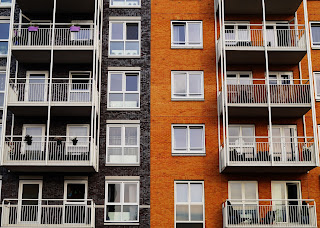 |
Photo by George Becker from Pexels
|
In the past few years, news articles have been circulating on Finland’s success with reducing houselessness. Finland is currently the only country in which houselessness is falling, and this progress is credited to the “Housing First” approach introduced by the Finnish government in 2007. This approach subverts the “staircase” model of disrupting houselessness as one transitions from sleeping rough to permanent housing. As opposed to requiring addiction and behavioral issues to be addressed before access to permanent shelter, this approach establishes secure housing first, then connects the individual additional services they may require. Tenants still sign leases and must pay rent, but assistance is provided as necessary.
Finland is not the only country to have used this approach, but their success with it is likely linked to the extent of the government’s involvement with the approach. Access to housing is a right protected by the Finnish Constitution, and the government has partnered extensively with landlords, like the Y-Foundation, to establish and provide this housing. Much of the land is government owned, making development of these units easier than in the US, and their zoning codes encourage mixing of socialized and private housing. Their extensive social services, from rental assistance to healthcare access, and their focus on connecting individuals with these programs are also major contributing factors to this reduction in houselessness.
Here in the US, the national government is aware of this approach, and it is acknowledged by the United States Interagency Council on Homelessness (USICH) as a valuable method. Due to the sprawling size of the country, as well as its large and diverse population, a national implementation of this approach is unlikely, as each city has different needs and barriers to solving houselessness. Richard Cho of USICH lays out how implementation in the US could work:
“Achieving these aims is impossible for one program alone. Rather, it requires a variety of programs and services including homeless outreach, emergency shelter, permanent supportive housing, affordable housing, rapid re-housing, along with case management supports, health care, income supports, employment services, and more. But it’s also not enough for these programs to simply exist; they need to work as part of a whole system to help people achieve these aims. That means that the focus of all programs must be to help people obtain permanent housing quickly and without conditions and contingencies. Programs should empower people to overcome barriers to obtaining permanent housing, access the right kinds of supports and care to keep their housing, and improve their quality of life.”
Here in Portland, efforts to alleviate houselessness are more dire than ever with the Covid-19 pandemic. A Willamette Week interview with Multnomah County Commissioner Sharon Meieran reveals that while efforts are being made to provide more housing and shelter, the coordinated efforts that have made Finland’s approach successful are lacking. Perhaps government coordination with existing non-profit shelter and health service providers, as Finland did with Y-Project, is the missing key to helping people access services and shelter more efficiently.
Sources:
https://endhomelessness.org/resource/housing-first/
https://www.usich.gov/news/four-clarifications-about-housing-first/

No comments:
Post a Comment